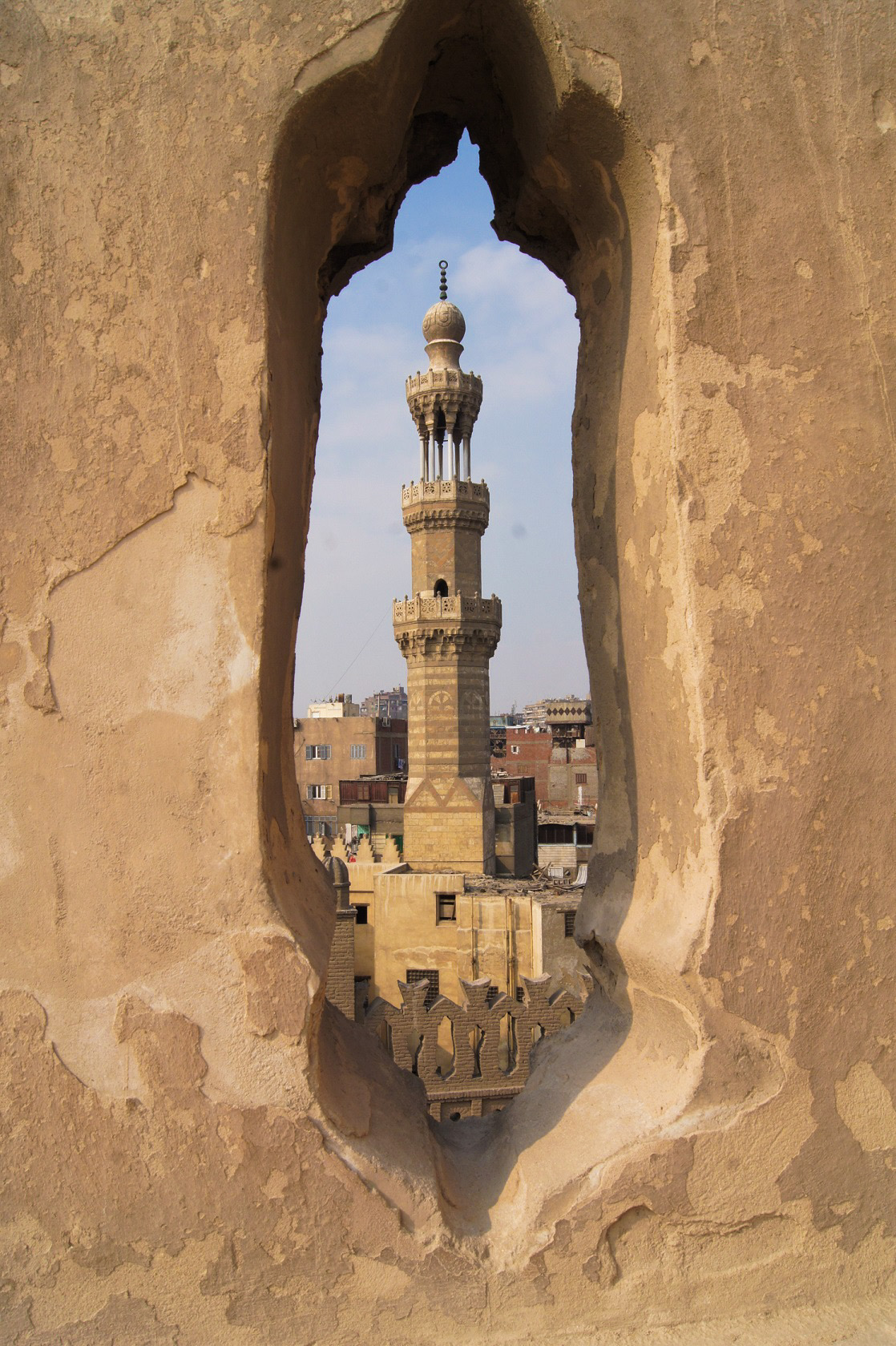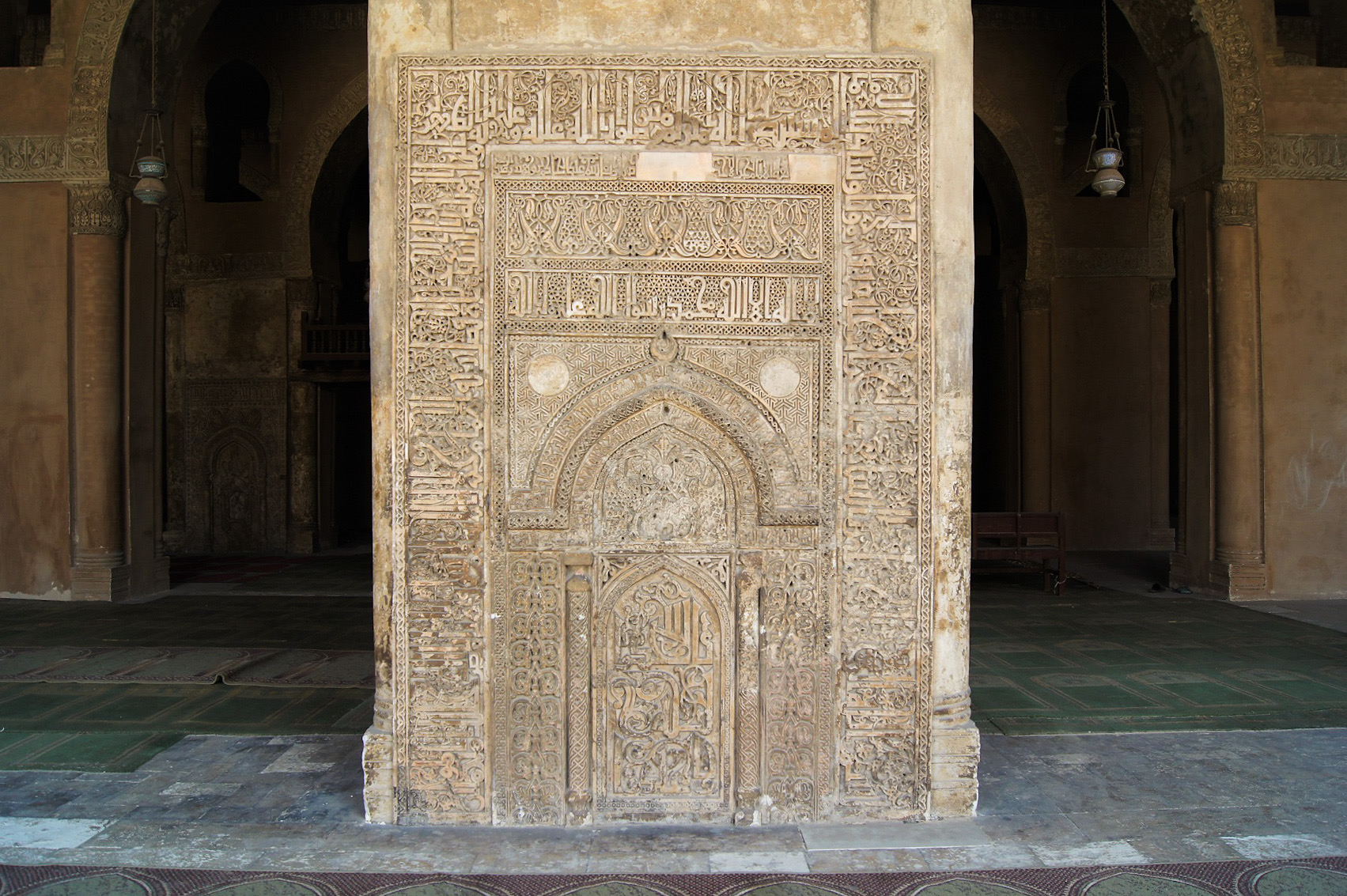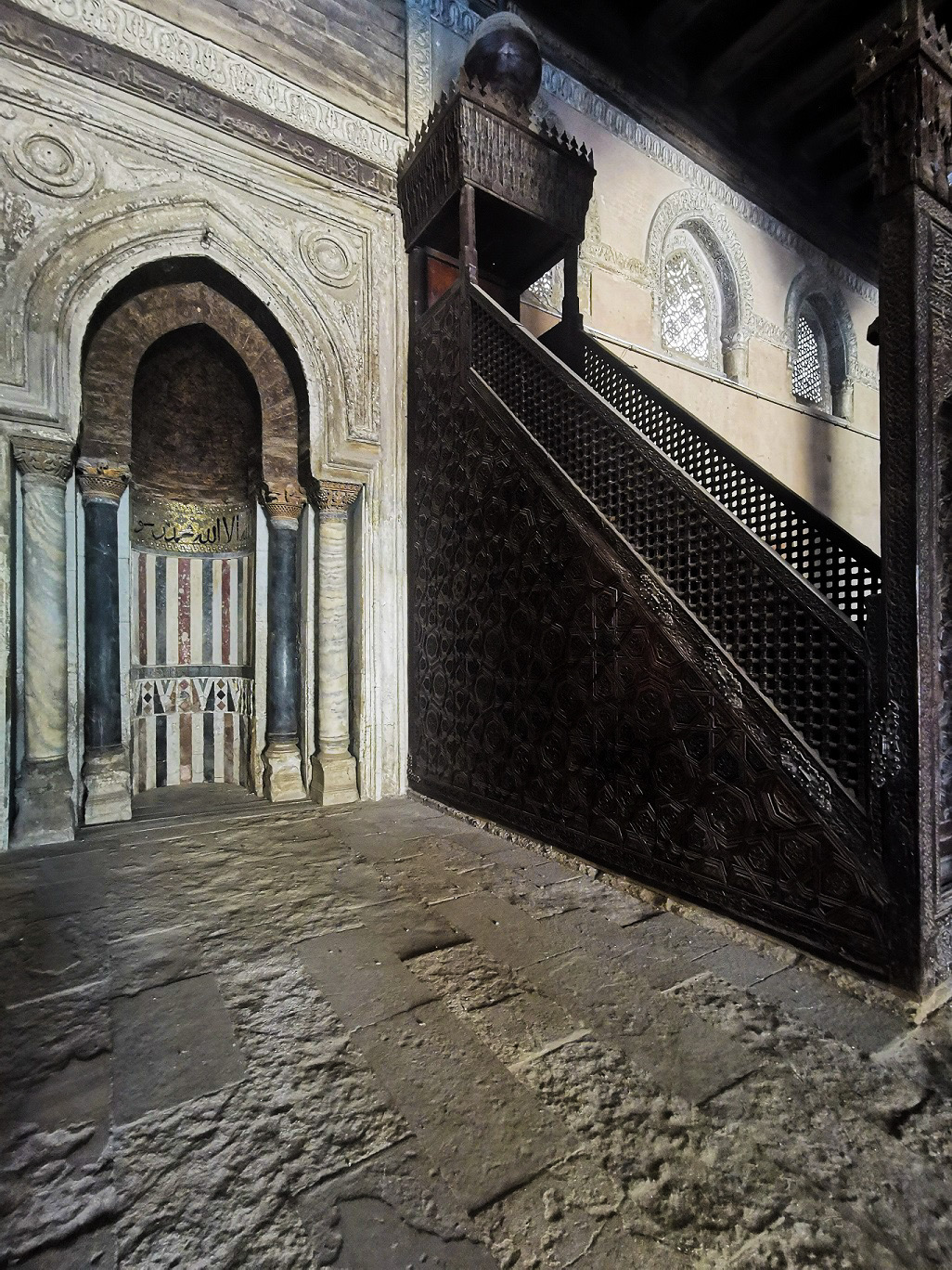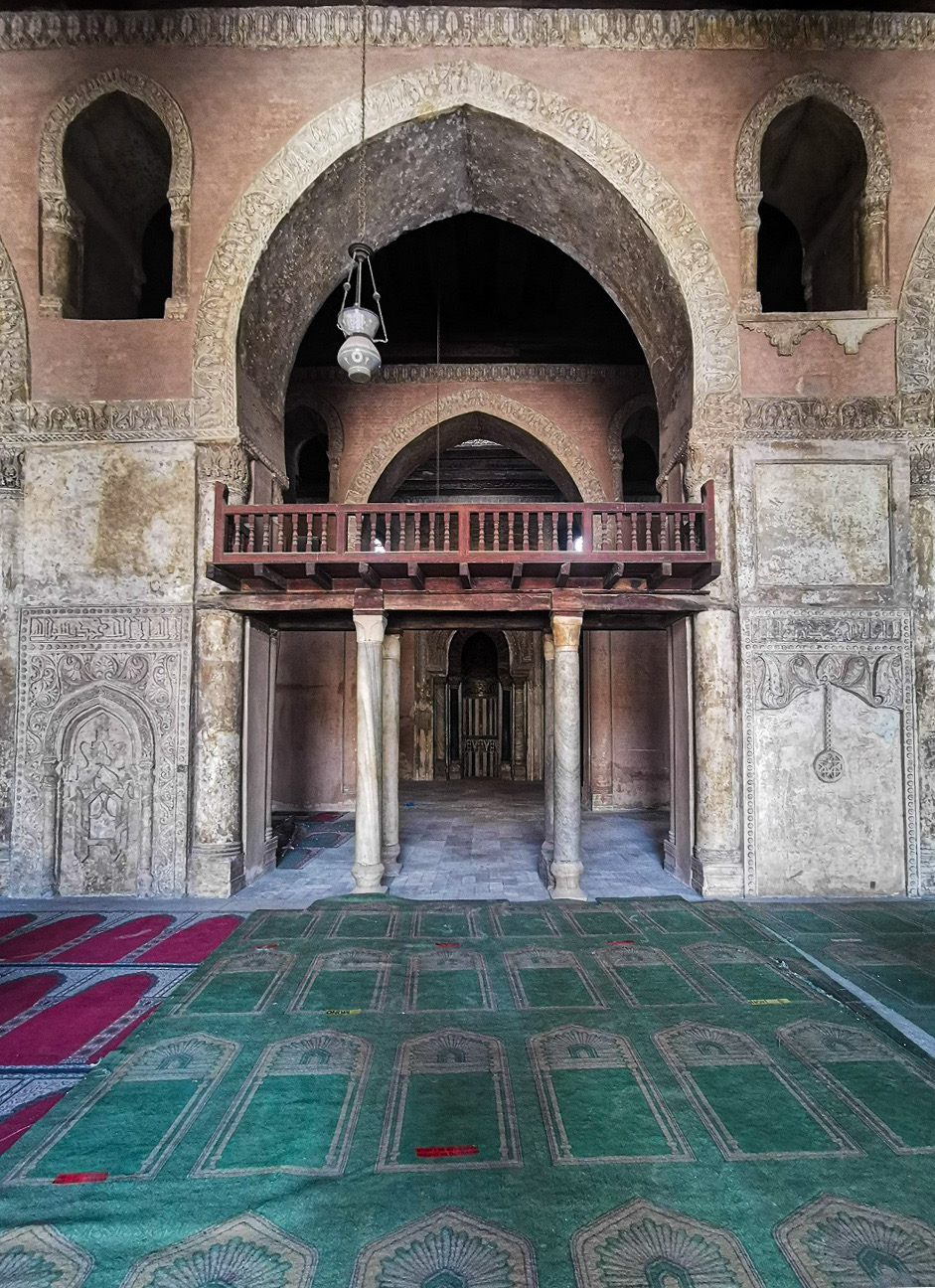
A monument of brilliant red brick and lace-like ornaments, the Mosque of Ibn Tūlūn is an homage to bygone centuries. Crisp air whistles through the complex, and imagination is reborn in time-etched crevices; a murmur of prayers, a loose calling of Allah is Greater, and an image of the ninth century develops in the mind.
Commissioned in 876 AD by Ahmed Ibn Tūlūn, the then-governor of Egypt and Syria, the mosque sits in present-day Cairo, flanked by three ziyādahs: courtyards that separated the religious structure from secular settlements. The architecture draws on Abbāsid sensibilities, with crenelated outside walls and carved stucco patterns framing the outer arches and foliated designs throughout. The minaret, a striking composition of three floors, features a different shape for each (squared, spiral, and octagonal).


Ibn Tūlūn ordered the mosque’s construction soon after assuming office and conquering Syria; he used it as a way to assert his independence from the Abbāsid Caliphate. Situated on Jebal Yashkur, the mosque was intended to “serve as the main congregational mosque of Ibn Tūlūn’s new administrative capital, al-Qata’i.”
Described as a man who “knew what he wanted and carried out his plans with determination,” Ibn Tūlūn successfully headed Egypt’s Tūlūnid dynasty. Colonial Professor Sir William Muir writes of him as a “wise and able ruler” who enabled Egypt to flourish as “it had never done before.”


His mosque was used regularly up until the early 10th century AD, when the Tūlūnid dynasty came to an otherwise abrupt end, courtesy of Abbāsid general Muhammed Sulayman al-Kātib. The structure survived largely due to its religious gravity and cultural significance, though that did not save it from inevitable neglect; soon, the mosque would fall into ruin.
Restorations came later, the most notable of which was carried out by Sultan Lajun in 1296 AD through 1299 AD, which saw the rebuilding of several areas within the mosque, including the wall facing Mecca and the adjacent minaret. However, the mosque would once again be victim to ruin for several centuries, at one point used as a belt factory and shopping locale throughout the 18th century.


The latest of its restorations began with the work of the Comité de l’Art Arabe in the 1890s, when the mosque was classed as a historic monument. Restoration continued under the orchestration of the Egyptian Antiques Organization, and the structure is now considered completely restored.
Colossal and cherished, the mosque is considered one of the oldest in Africa—and perhaps, one of the most important in Egypt. With a simplistic, humble appeal the mosque is visited as a key heritage site in Cairo, with a blue sky weighing over it and a horizon plotted with Cairene likeness.







Comments (0)